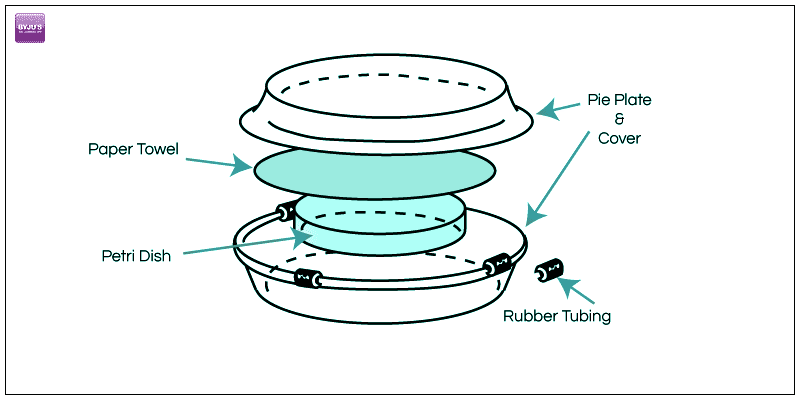
What is a Slime Mold?
Slime moulds are a general name given for all unrelated eukaryotes, which are capable of living freely as single cells but can aggregate together to form multicellular reproductive structures.
Slime moulds were formerly classified as fungi but are no longer considered part of that kingdom. Although it is not related to one another, they are still sometimes grouped within the kingdom Protista. Altogether, there are more than 1000 species of slime mould present all over the world. These species usually feed on bacteria, fungi and other microbes usually present on any type of dead plant materials. Size of slime moulds varies from few centimetres to several meters.
Slime moulds are usually found on moist and damp places like lawns, rain gutters, blocked drains, air conditioners, soil, forest floor, on fruits, on flowers, etc.
Let us do a simple experiment to grow and learn about Slime mould.
Aim
To grow slime mould in various conditions.
Materials Required
- Scissors
- Dropper
- Petri Dish
- Colour pencil
- Distilled Water
- Paper Towel or tissues
- Samples of slime mould
- 2 small pie dishes or plates
- 2 small clear lids of a pie size
- One foot long Rubber tubing
- Nitrile or Rubber Hand gloves
- Uncooked rolled whole-grain oats
- Fruit or cereals – food for the slime mould
- A toxin – A nail paint remover or Vinegar.
Procedure
Experiment Set up:
- Wear clean and sterilized hand gloves to avoid the contamination of the setup.
- Cut one-inch lengths of rubber tubes and cut to open the circles.
- As shown in the above diagram, fit the tube pieces around the bottom of the pie dish or plates.
- Now carefully keep the petri dish within the pie dish without disturbing the setup.
- Cut a circle from a paper towel having a diameter larger than that of the petri dish.
- Use this paper towel to cover the top of the petri dish.
- Before placing the paper towel, wet it with distilled water.
- Place the cover of the pie dish over the setup.
Growing the mould:
- At first, moisten the paper towel with distilled water.
- Place the slime mould sample on the paper towel and add a drop of water.
- Keep the sample aside without disturbing.
- After slime mould is rehydrated keep an uncooked oat near it.
- Remember to keep the dish covered after feeding.
- Once the mould starts growing, add more uncooked oats.
- Paper towel should remain moist.
- Add distilled water drop by drop to moist the paper towel
- Record all your observations, click pictures and draw sketches to document the growing pattern.
- With the help of a colour pencil, make a note of any changes in the colour or size of a mould.
Experiment:
- Perform different trials using different types of food to feed the moulds. Observe and make a note of which food helps the mould grow best.
- Secondly, add a few small drops of toxins, like nail polish remover or vinegar and observe what happens with the slime mould.
Results
As per the observations, the slime mould grows and move around in search of nutrients and moves away from toxic substances.
Conclusions
Alike amoeba, the mould also moves around in search of nutrients required for it to grow larger.
In the whole experiment, we also observed that the slime mould prefers to live and grow in wet and cold environments such as near the water bodies, barks and branches of trees, etc.
Discover more about slime moulds, its features, and other related topics only at BYJU’S Biology


Comments